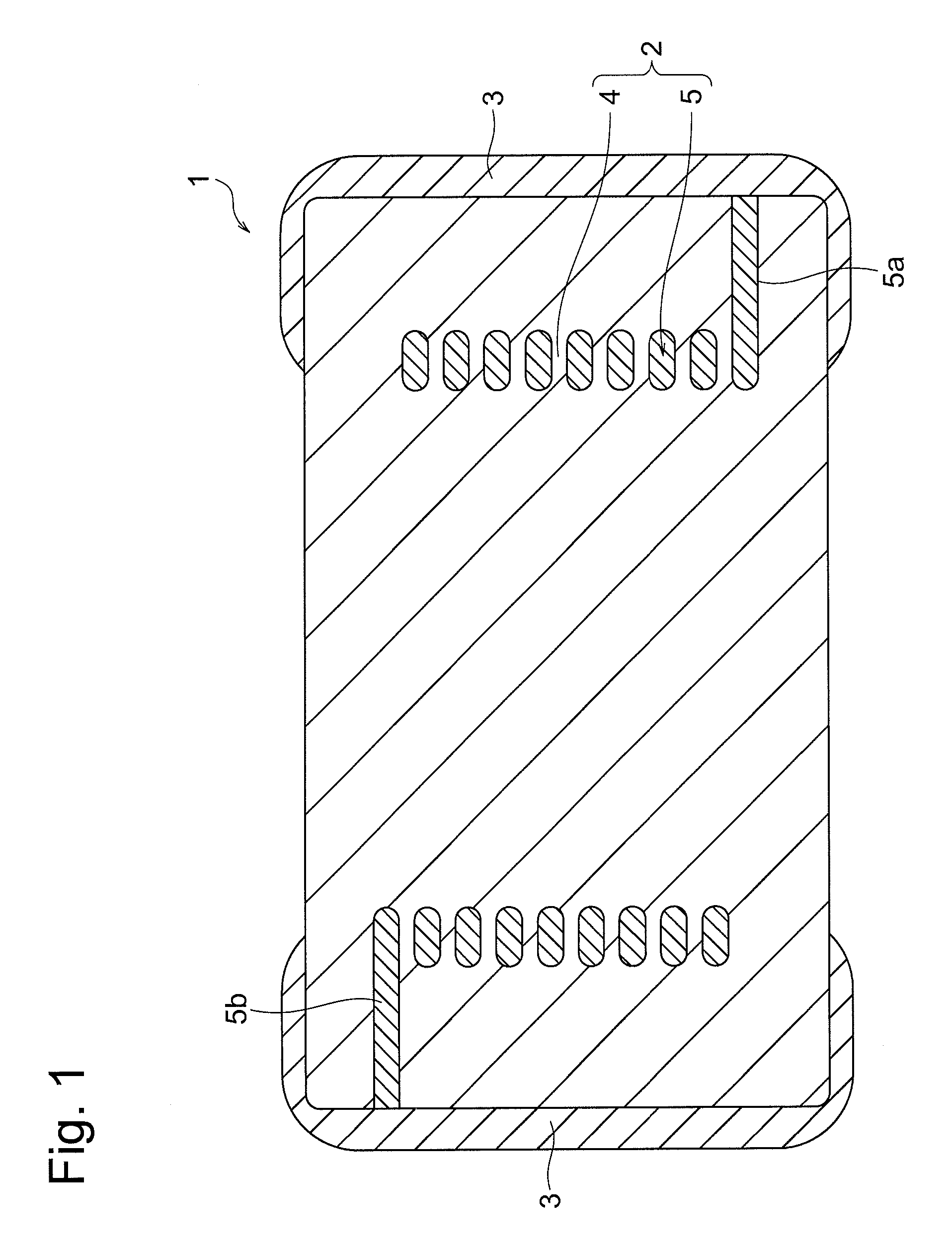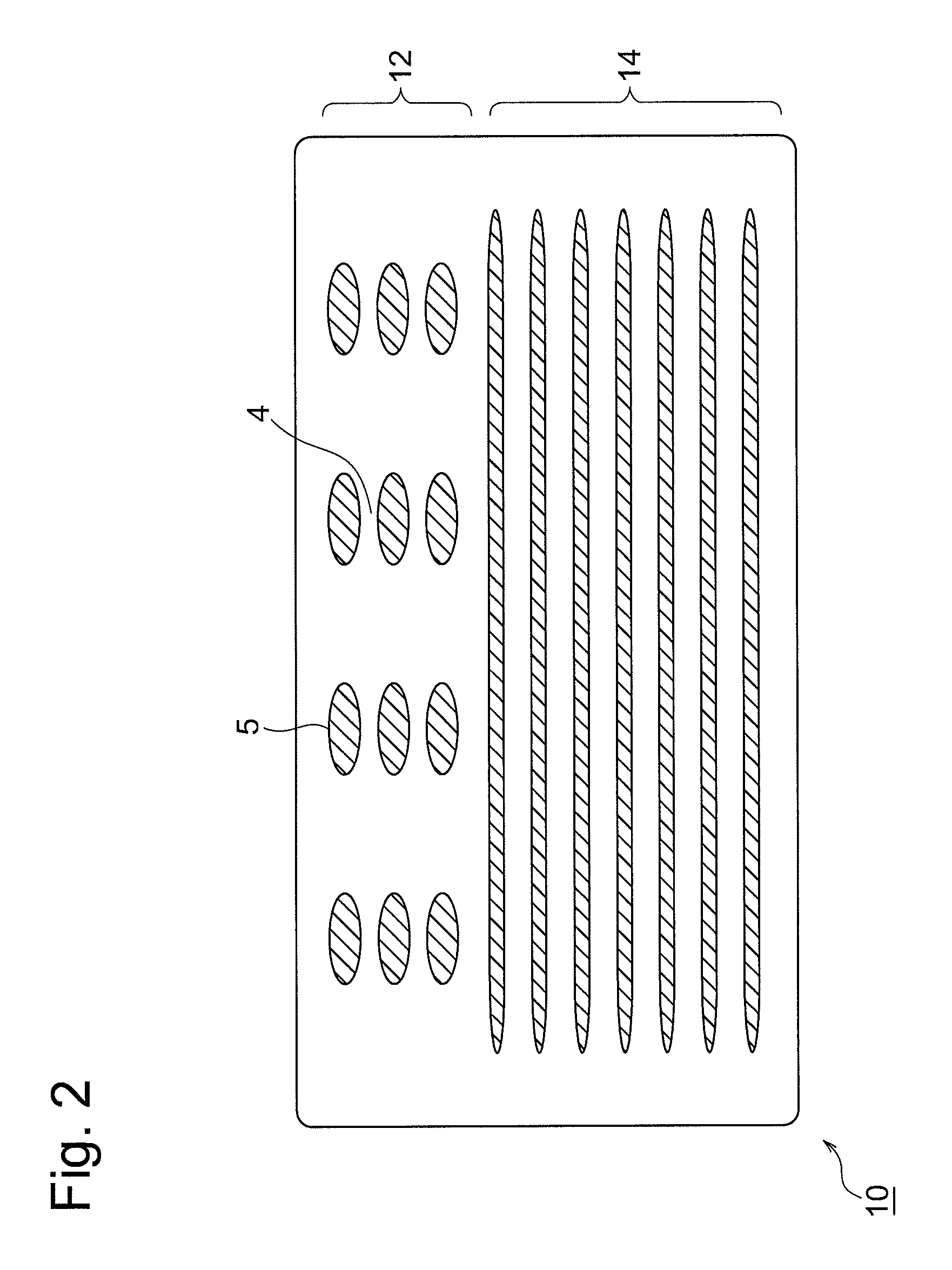Ferrite composition and electronic component
a technology of ferrite and electronic components, applied in the direction of magnetic materials, inductances, magnetic bodies, etc., can solve the problems of easy loss increase and decrease of q values, downsizing of inductance elements
- Summary
- Abstract
- Description
- Claims
- Application Information
AI Technical Summary
Benefits of technology
Problems solved by technology
Method used
Image
Examples
example 1
[0053]First, as materials of the main component, Fe2O3, NiO, CuO, and ZuO (when zinc oxide was included) were prepared. As materials of the sub component, SnO2, Bi2O3, and Co3O4 were prepared.
[0054]Next, after powders of the prepared main component and sub component were weighted so that they satisfied the composition described in Tables 1 and 2 as sintered bodies, they were wet mixed for 16 hours in a ball mill, and a raw material mixture was obtained.
[0055]Next, after the obtained raw material mixture was dried, it was calcined for 4 hours at 720° C. in the air, and the calcined powders were obtained. The pulverized powders were obtained by wet pulverizing the calcined powders for 16 hours in a steel ball mill.
[0056]Next, after drying the pulverized powders, granulation was performed by adding 10.0 wt % of a polyvinyl alcohol solution as a binder having 6 wt % concentration into the pulverized powder 100 wt % so as to obtain granules. The granules were molded by pressure so as to ...
example 2
[0066]With respect to sample number 12 of Table 1 and sample numbers 31, 32 and 33 of Table 2, FIG. 5 was obtained by summarizing the results of Q values measured under an external magnetic field (H=20 to 400 A / m) except for H=100 A / m and H=200 A / m. Other factors other than the external magnetic field were measured in the same way as with Example 1. Note that, sample number 31 corresponds to a conventional non-additive material, sample number 32 corresponds to a conventional Co additive material, and sample number 33 corresponds to a conventional SnBi additive material. Also, with respect to the conventional non-additive material and Co additive material, Q values could not be measured at H=350 and 400 A / m.
[0067]From FIG. 5, it is understood that the SnCoBi additive material according to the present invention can keep Q values high under the high magnetic fields of 20 to 400 A / m compared with the conventional non-additive material, Co additive material, and SnBi additive material.
[0...
PUM
| Property | Measurement | Unit |
|---|---|---|
| crystal particle diameter | aaaaa | aaaaa |
| melting point | aaaaa | aaaaa |
| particle diameter | aaaaa | aaaaa |
Abstract
Description
Claims
Application Information
 Login to View More
Login to View More - R&D
- Intellectual Property
- Life Sciences
- Materials
- Tech Scout
- Unparalleled Data Quality
- Higher Quality Content
- 60% Fewer Hallucinations
Browse by: Latest US Patents, China's latest patents, Technical Efficacy Thesaurus, Application Domain, Technology Topic, Popular Technical Reports.
© 2025 PatSnap. All rights reserved.Legal|Privacy policy|Modern Slavery Act Transparency Statement|Sitemap|About US| Contact US: help@patsnap.com



